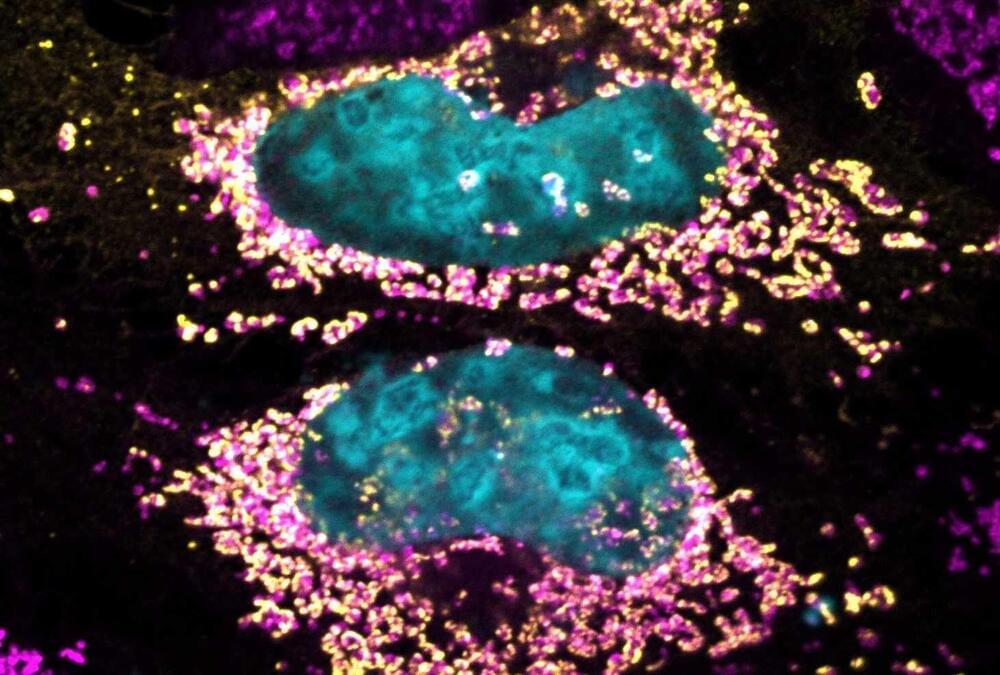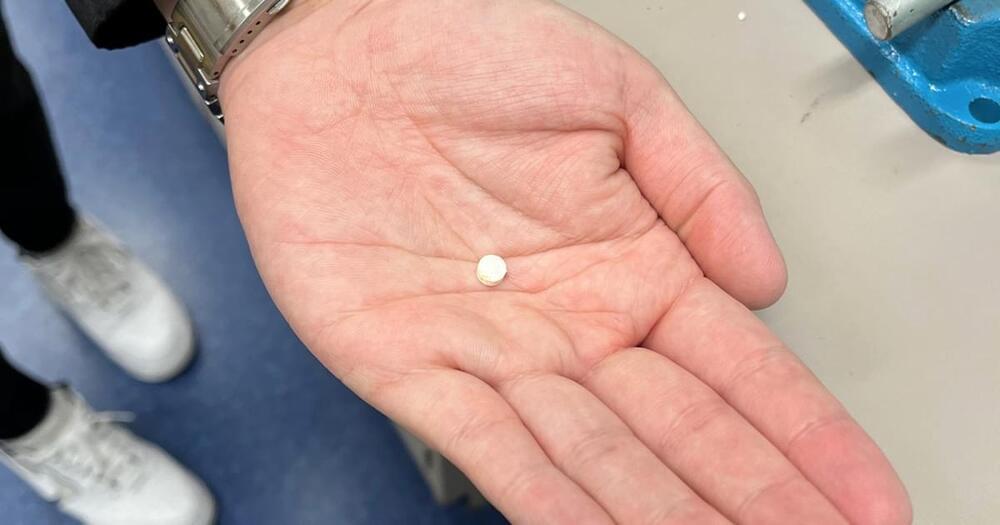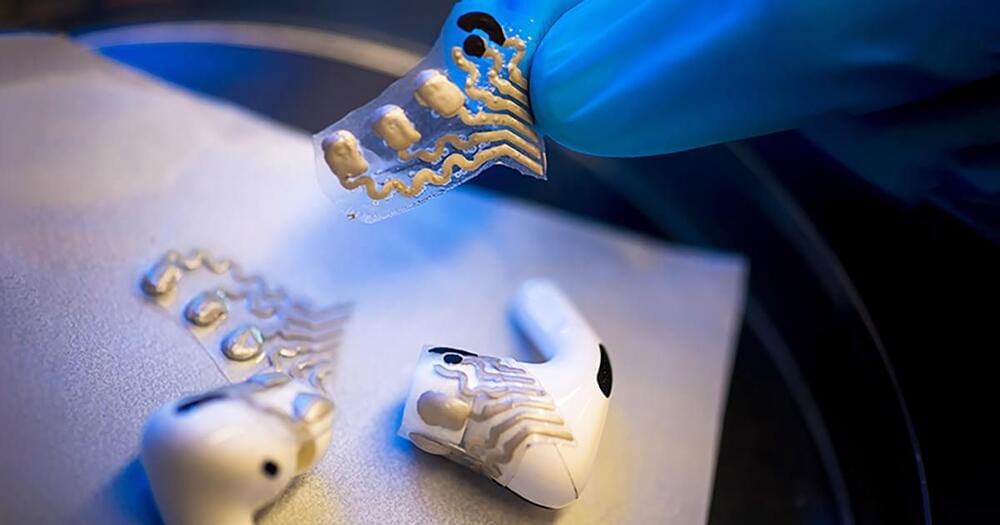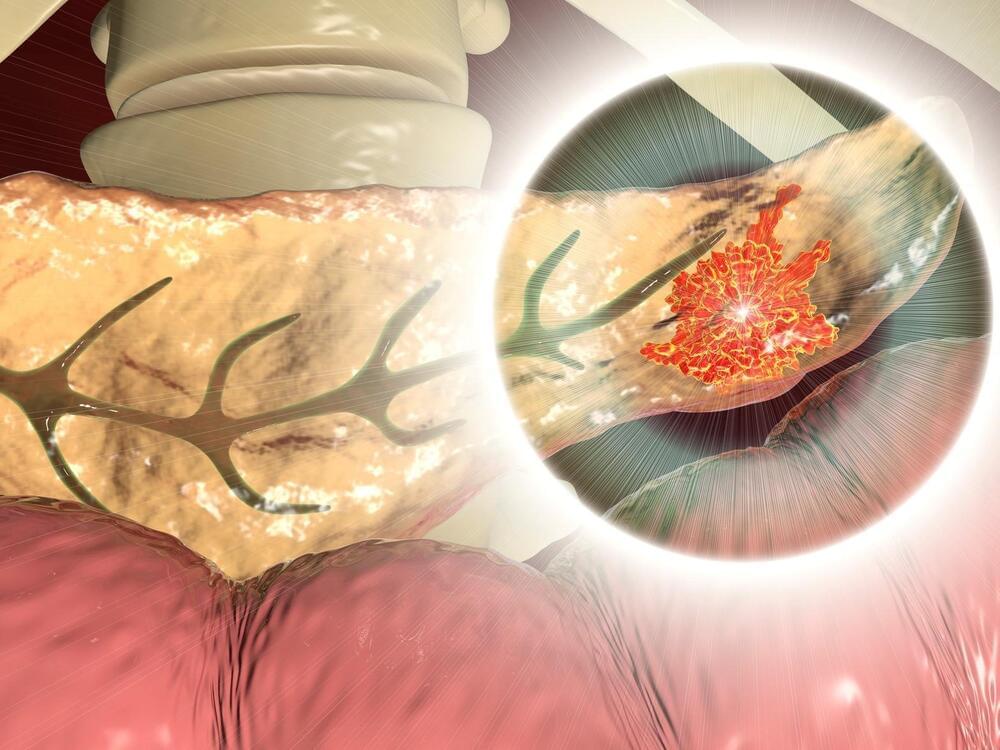The eye transplant, which was combined with a partial face transplant, did not restore vision. Experts still say it is a groundbreaking achievement.



Researchers at the University of São Paulo (USP) in Brazil, partnering with colleagues in Australia, have identified a novel bacterial protein that can keep human cells healthy even when the cells have a heavy bacterial burden. The discovery could lead to new treatments for a wide array of diseases relating to mitochondrial dysfunction, such as cancer and auto-immune disorders. Mitochondria are organelles that supply most of the chemical energy needed to power cells’ biochemical reactions.
The study is published in the journal PNAS. The researchers analyzed more than 130 proteins released by Coxiella burnetii when this bacterium invades host cells, and found at least one to be capable of prolonging cell longevity by acting directly on mitochondria.
After invading host cells, C. burnetii releases a hitherto unknown protein, which the authors call mitochondrial coxiella effector F (MceF). MceF interacts with glutathione peroxidase 4 (GPX4), an anti-oxidant enzyme located in the mitochondria, to improve mitochondrial function by promoting an anti-oxidizing effect that averts cell damage and death, which may occur when pathogens replicate inside mammalian cells.

Bryan Johnson is the world’s most famous biohacker – and perhaps the “most measured man in human history”. He’s on a mission to maximally reverse the quantified biological age of each of his 70 organs, extending his lifespan and healthspan, and then roll out his protocol on a platform to ensure others can benefit from his experience, research and experimentation.
Johnson’s ethos can be summed up pretty neatly as don’t die, and to that end, he has written a book, or novel, to be more accurate, entitled Don’t Die, the uncorrected advanced reading version of which is downloadable as a free ebook from his website. Johnson’s nom de plume for this venture is Zero, described in the book as the “first individual H. sapiens to surpass five hundred years of age,” who dies in 2,478 (in an accident, rather than from old age), just weeks away from “becoming Homo Deus.” Johnson credits Zero with the invention of Zeroism and the resurrection technology undie, as well as the fathering of “millions of biological and digital offspring who now live in the far reaches of the solar system and beyond”
Longevity. Technology: Because Don’t Die is a novel, Johnson can explore his philosophy in a different way, inviting us to observe the narrator, Scribe, on his last day on Earth, as he muses on humanity’s future evolution, the nature of death and free will and the impact of age reversal and programmable biology. Scribe is joined by a Pilgrim’s Progress-like cast of characters, including Cognitive Bias, Dark Humor and Game Play and Self Critical.

Fellow Macquarie University researchers Dr Ram Maharjan and Associate Professor Amy Cain are part of a contingent of scientists coming at the issue from another direction: studying a single protein that, when damaged, causes A. baumannii to lose its superpowers, compromising a drug pumping system that pushes antibiotics and other threats out of the cell.
While further studies are needed to understand how biocides work and how they interact with antibiotics, Dr Li stressed we should not discontinue their use in healthcare facilities and in the community.
“The findings in our study suggest that residual biocides could compromise antibiotic potency, at least in the lab,” Dr Li said.


The Rejuvenation Startup Summit (Berlin, May 10–11, 2024) hosted by the Forever Healthy Foundation, is a vibrant networking event that aims to accelerate the development of the rejuvenation biotech industry.
Rejuvenation/longevity biotech is a new, emerging field of medicine. It aims to prevent and reverse diseases of aging by addressing their common root cause, the aging process itself. Rejuvenation therapies aim to reverse or repair age-related cellular changes such as molecular waste, calcification, tissue stiffening, loss of stem cell function, genetic alterations, and impaired energy production.

A first-of-its-kind flexible sensor turns a pair of earbuds into a device capable of recording brain activity and analyzing sweat, making them useful for diagnosing diseases and health monitoring.
The background: Health monitoring wearables can measure our blood pressure, track our heart rates, and even detect infections before we start to feel sick, helping us take better care of ourselves and potentially even giving us a way to prevent the spread of diseases.
The devices are useless if no one wants to wear them, though, so finding designs that are comfortable and easy to integrate into daily life is key. Because earbuds are already popular, researchers have used them as the basis for health monitoring devices that record brain activity to predict strokes, epileptic seizures, or Parkinson’s disease.

Epilepsy is a neurological condition that causes people to have recurring seizures. Epileptic seizures may be mild and barely noticeable or stronger ones, causing severe muscle spasms or loss of consciousness. These may last a few seconds or several minutes. Anyone can develop epilepsy at any point in their life.

Chptr, an app for sharing and holding onto memories of lost loved ones, has raised $1.5 million in seed funding. The app is designed to give people a way to encapsulate the life of their loved ones by inviting others to share and store stories, images, audio messages, videos and more all in one place.
The startup was founded in 2020 by Rehan Choudhry, who came up with the idea for the app when he was helping his wife, a news anchor at CBS New York, put together video tributes for the first victims of COVID-19 in New York City. Choudhry told TechCrunch in an interview that the pair was reaching out to the families, friends, neighbors and colleagues of the victims to paint a picture of what their life was like.
“The thing I realized after talking to a lot of families was that these videos served as almost a reunion point for people that they will continue to grieve around,” Choudhry said. “We noticed that the grieving process that would normally take 90 days was extended to months because they had something to rally around. So then the question for me was why doesn’t everyone on the planet have access to this because we all have smartphones and social media. So I went down the rabbit hole of discovery and it brought me to Chptr.”

Blocking how cancer cells acquire and use energy, or their metabolism, as a treatment has been challenging, Dr. Lyssiotis explained. But a better understanding of how cancer cells adapt their metabolism in the often oxygen-and nutrient-deprived environments in which they exist, he said, may open other avenues for attacking them.
Identifying alternative sources of energy for cancer cells
Pancreatic cancer is one of the leading causes of death from cancer. Not only does its stark microenvironment thwart the entry of drugs designed to kill tumors, but numerous studies have shown that other residents in and around the tumors create an ecosystem that help the tumors thrive.